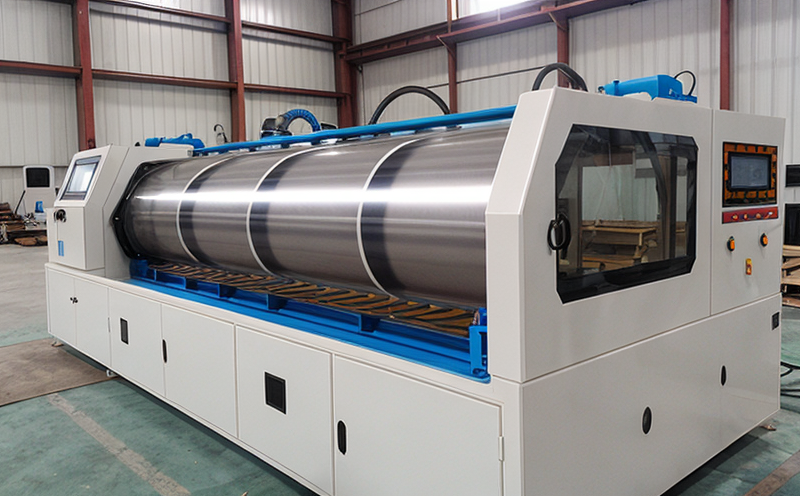Textile Tensile Strength Strip Method Test
The textile tensile strength strip method test is a fundamental and widely used procedure in quality assurance and compliance. This test evaluates the resistance to breaking force of coated, laminated, or finished textiles under defined conditions. It provides critical insights into the durability and performance of these materials across various sectors like automotive, aerospace, construction, and consumer goods.
The strip method involves cutting a small sample from the textile in accordance with specific standards such as ASTM D3786. The specimen is then clamped at both ends using fixtures on a universal testing machine (UTM). A constant rate of extension or rupture is applied until the material breaks, and the maximum force measured is reported in units like Newtons per meter or pounds per inch.
Understanding tensile strength is essential for ensuring that textiles meet industry requirements. For instance, in automotive interiors, high tensile strength ensures longevity under repeated use and environmental exposure. Similarly, in construction fabrics, it guarantees durability against wear and tear during installation. This test helps manufacturers and quality control teams identify potential weaknesses early in the development process.
The methodology also considers factors such as the type of coating or finish applied to the textile. Different finishes can significantly impact the tensile properties. For example, a water repellent treatment may alter the flexibility but enhance resistance to moisture. The test parameters must be adjusted accordingly to reflect these changes accurately.
Moreover, this testing technique is not limited to just identifying material strengths; it also helps in optimizing production processes. By understanding how different variables affect tensile strength, companies can make informed decisions about raw materials and manufacturing techniques. This ensures that the final product meets both performance standards and cost efficiency goals.
The results of this test play a crucial role in ensuring compliance with international standards such as ISO 13934-2 for coated fabrics or ASTM D3786 for textiles. These standards provide detailed guidelines on specimen preparation, testing procedures, and data interpretation to ensure consistency and reliability across different laboratories.
In summary, the textile tensile strength strip method test is a vital tool in the quality control arsenal of any company dealing with coated, laminated, or finished textiles. Its ability to provide precise measurements under controlled conditions makes it indispensable for assessing material performance before deployment into real-world applications.
Why It Matters
The importance of understanding textile tensile strength cannot be overstated, especially when dealing with materials that undergo rigorous use or exposure to harsh environments. High tensile strength ensures the longevity and reliability of products across numerous industries.
- Enhanced Durability: Products made from textiles with high tensile strength last longer without showing signs of wear and tear, leading to increased customer satisfaction and reduced maintenance costs.
- Better Performance in Extreme Conditions: Materials that can withstand significant stress are more likely to perform well under extreme conditions such as temperature fluctuations or mechanical pressure.
- Informed Decision-Making: Accurate tensile strength data allows manufacturers to make informed choices about raw materials and production methods, optimizing both quality and cost-effectiveness.
Furthermore, compliance with international standards ensures that products meet the highest safety and performance criteria. This not only protects end users but also enhances brand reputation by demonstrating commitment to excellence in product development.
Benefits
- Precise Measurement: Provides accurate data on the breaking force of textiles, crucial for quality control and standard adherence.
- Detailed Insights: Offers deep understanding into how different factors influence tensile strength, aiding in process optimization.
- Consistency Assurance: Ensures that all tests follow standardized procedures, leading to consistent results across multiple batches or samples.
- Compliance Verification: Helps verify compliance with relevant international standards and regulations, ensuring legal and safety requirements are met.
Eurolab Advantages
At Eurolab, we pride ourselves on offering unparalleled expertise in textile testing. Our team of experienced professionals ensures that every test is conducted with precision and accuracy, providing reliable results that are trusted by leading brands worldwide.
- Comprehensive Services: We offer a wide range of textile tests including tensile strength strip method alongside other essential assessments like tear resistance and elongation at break.
- State-of-the-Art Equipment: Equipped with cutting-edge universal testing machines (UTMs) and advanced software, our facilities guarantee accurate measurements and detailed analyses.
- Compliance Expertise: Our consultants are well-versed in international standards such as ISO 13934-2 and ASTM D3786, ensuring that all tests meet the highest quality benchmarks.
We also offer comprehensive reporting solutions tailored to your specific needs. Whether you require detailed technical reports or summaries for internal use, our team can provide exactly what you need. Contact us today to learn more about how Eurolab can support your textile testing requirements.





